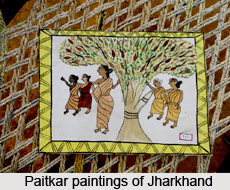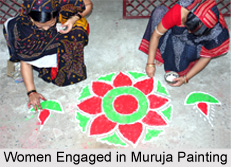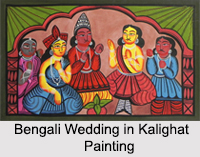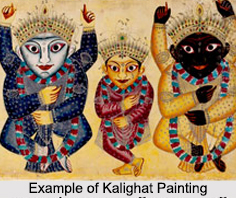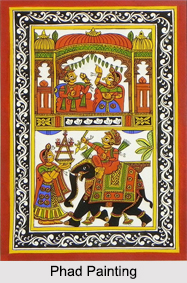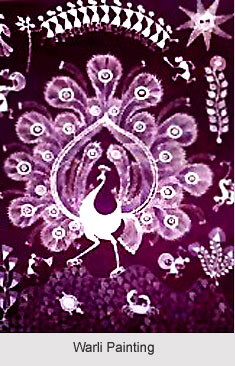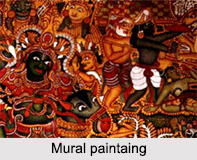 Paintings of Kerala have a rich tradition that goes back to the immediate Post-Ajanta Period. The murals of Tirunandikkara cave temple are the specimens of the finest art form in Kerala and they are believed to be of Pandiyan origin. Churches of Kerala also contain some valuable pieces of paintings. Raja Ravi Verma is one of the outstanding names in the art of painting in Kerala. The paintings of Raja Ravi Verma are considered as masterpieces and they adorn some of the notable art galleries of India.
Paintings of Kerala have a rich tradition that goes back to the immediate Post-Ajanta Period. The murals of Tirunandikkara cave temple are the specimens of the finest art form in Kerala and they are believed to be of Pandiyan origin. Churches of Kerala also contain some valuable pieces of paintings. Raja Ravi Verma is one of the outstanding names in the art of painting in Kerala. The paintings of Raja Ravi Verma are considered as masterpieces and they adorn some of the notable art galleries of India.
People can say that the tradition of painting on walls began in Kerala with the pre-historic rock paintings found in the Anjanad valley of Idukki district. Rock engravings dating to the Mesolithic period have also been discovered in two regions of Kerala.
Significance of the Kerala Paintings
Swathi Thirunal, the great ruler of Travancore, extended generous patronage to the art of painting. Alagiri Naidu, a distinguished painter from Madurai, gave training to Raja Raja Verma of the Kilimanur royal family and the latter in his turn trained up his nephew Raja Ravi Verma. The paintings of Raja Ravi Verma depict a fine technique of European oil painting and it helped him in achieving international recognition. The various pictures of Gods and Goddesses painted by Raja Ravi Verma are even today considered as objects of mass worship.
Dhuleechitram or powder drawing is a traditional way of painting mythical figures on floor using natural paints. This ritualistic art form is known as Kalam or Kalamezhuthu. Kalam is practised in temples and sacred groves of Kerala where the representation of deities like Goddess Kali, Lord Ayyappa, et al are made on the floor usually in five colors. The deities to be drawn are decided based on various factors. The presiding deity of the temple or sacred grove, the religions purpose that calls for the ritual, the particular sector cast who does it all are deciding factors as to the nature or figure on the Kalam. This is a traditional art and observes strict rules regarding what colours to be used to depict a particular part of the body, what to draw first and the order in which each part of the body has to drawn etc.
The earliest of the murals paintings of Kerala are found in a small cave-shrine in the side of a great rock at Thirunandikkara (now part of Tamil Nadu). The themes of such paintings are drawn from Hindu lore; Lord Ganesha, Lord Shiva and Parvati being among the deities represented. But the best place to see sixteenth-century paintings is Padmanabhapuram, now part of Tamil Nadu. The themes are drawn from the story of Lord Rama and Lord Krishna and also from the Indian Puranas. Further, the Udayanapuram temple, Vaikom, has several ancient murals. These paintings are characterized by extreme simplicity and vigor.
